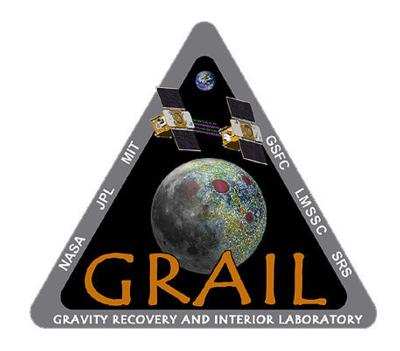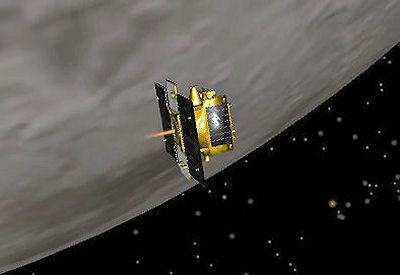NASA'S Twin Grail Spacecraft Reunite
The second of NASA's two Gravity Recovery And Interior
Laboratory (GRAIL) spacecraft has successfully completed its
planned main engine burn and is now in lunar orbit. Working
together, GRAIL-A and GRAIL-B will study the moon as never
before.

"NASA greets the new year with a new mission of exploration,"
said NASA Administrator Charles Bolden. "The twin GRAIL spacecraft
will vastly expand our knowledge of our moon and the evolution of
our own planet. We begin this year reminding people around the
world that NASA does big, bold things in order to reach for new
heights and reveal the unknown."
GRAIL-B achieved lunar orbit at 2:43 p.m. PST (5:43 p.m. EST)
Sunday. GRAIL-A successfully completed its burn Saturday at 2 p.m.
PST (5 p.m. EST). The insertion maneuvers placed the spacecraft
into a near-polar, elliptical orbit with an orbital period of
approximately 11.5 hours. Over the coming weeks, the GRAIL team
will execute a series of burns with each spacecraft to reduce their
orbital period to just under two hours. At the start of the science
phase in March 2012, the two GRAILs will be in a near-polar,
near-circular orbit with an altitude of about 34 miles.
During GRAIL's science mission, the two spacecraft will transmit
radio signals precisely defining the distance between them. As they
fly over areas of greater and lesser gravity caused by visible
features such as mountains and craters, and masses hidden beneath
the lunar surface, the distance between the two spacecraft will
change slightly.
Scientists will translate this information into a
high-resolution map of the moon's gravitational field. The data
will allow scientists to understand what goes on below the lunar
surface. This information will increase knowledge of how Earth and
its rocky neighbors in the inner solar system developed into the
diverse worlds we see today.
Each spacecraft carries a small camera called GRAIL MoonKAM
(Moon Knowledge Acquired by Middle school students) with the sole
purpose of education and public outreach. The MoonKAM program is
led by Sally Ride, America's first woman in space, and her team at
Sally Ride Science in collaboration with undergraduate students at
the University of California in San Diego.

GRAIL MoonKAM will engage middle schools across the country in
the GRAIL mission and lunar exploration. Thousands of fifth- to
eighth-grade students will select target areas on the lunar surface
and send requests to the GRAIL MoonKAM Mission Operations Center in
San Diego. Photos of the target areas will be sent back by the
GRAIL satellites for students to study.
A student contest that began in October 2011 also will choose
new names for the spacecraft. The new names are scheduled to be
announced in January 2012. Ride and Maria Zuber, the mission's
principal investigator at the Massachusetts Institute of Technology
in Cambridge, chaired the final round of judging.
NASA's Jet Propulsion Laboratory in Pasadena, Calif., manages
the GRAIL mission for NASA's Science Mission Directorate,
Washington. The GRAIL mission is part of the Discovery Program
managed at NASA's Marshall Space Flight Center in Huntsville, Ala.
Lockheed Martin Space Systems in Denver built the spacecraft.
 NTSB Final Report: Cozy Cub
NTSB Final Report: Cozy Cub ANN FAQ: Contributing To Aero-TV
ANN FAQ: Contributing To Aero-TV Classic Aero-TV: Seated On The Edge Of Forever -- A PPC's Bird's Eye View
Classic Aero-TV: Seated On The Edge Of Forever -- A PPC's Bird's Eye View ANN's Daily Aero-Linx (04.29.25)
ANN's Daily Aero-Linx (04.29.25) ANN's Daily Aero-Term (04.29.25): Execute Missed Approach
ANN's Daily Aero-Term (04.29.25): Execute Missed Approach




